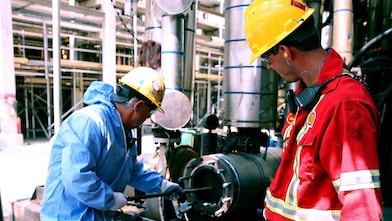渣油加氢
通过沸腾床渣油加氢裂化处理渣油 的需求在世界范围内不断增长。沸腾床渣油加氢裂化是一项成熟的商业化技术,渣油转化率高,因此可以最小化用于船用燃料油池的渣油量。
提高炼油厂原油多元化经济性的工艺技术
沸腾床渣油加氢裂化作为炼油厂的一项技术解决方案,随着近期更加灵活的减压渣油原料加工,提高炼油厂原油多元化经济性,这对炼油厂的吸引力正在增大。沸腾床加氢裂化是一项由来已久的技术,改进后的设计可以转化金属含量高和康氏残碳高(CCR)的减压渣油(540oC以上馏分)的转化率大于85%。自20世纪60年代沸腾床加氢裂化商业化以来,已建成16套装置。在过去的四年中,随着这项技术的不断普及,目前有7套新装置处于建设和开工阶段。
催化剂开发的定制方法
沸腾床加氢裂化装置根据炼油厂的专项目标进行高度定制,在最新的基础设计中进行了大量创新设计。早期设计与下游流化催化裂化装置更紧密地集成,关键产品需要进一步加工以满足要求的规格。相比之下,新一代装置的设计特点是在同一高压回路中集成了加氢裂化-高压加氢处理装置,使得从减压渣油直接生产超低硫柴油等高价值运输燃料成为可能。
壳牌目前运营两种类型的沸腾床装置许可技术:Axens的H-OilRC和Chevron Lummus Global的LC-FINING技术。此外,壳牌催化剂与技术在沸腾床催化剂领域拥有40多年的经验,目前为H-OilRC和LC-FINING装置提供定制催化剂。

利用业主-运营商专业知识满足清洁燃料需求
随着对清洁燃料的需求持续增长,渣油加氢成为满足这一增长需求的关键过程。壳牌催化剂与技术优先与炼油厂合作,对流程和结果进行深入诊断和全面审核。这有助于炼油厂在渣油加氢催化剂和技术组合方面做出最有效的决策。


